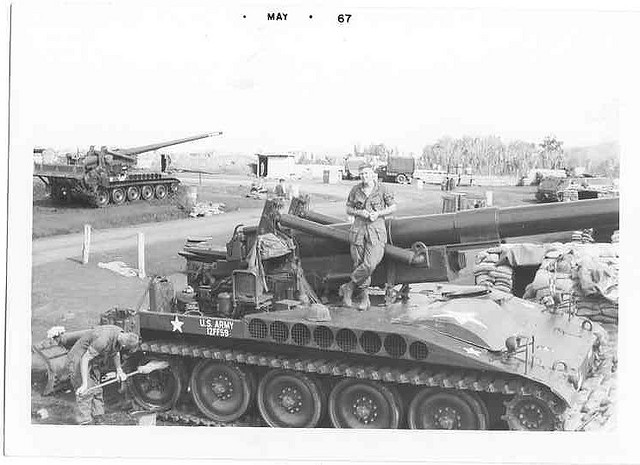
How one Vietnam vet continues to work for the future of our country.
Dave Bilski is a man born to fight.
When he was 19, Bilski was drafted and sent to fight in Vietnam. His unit was the only of its kind in Vietnam at the time, as it was the only one using the firepower of a mobile Howitzer track vehicle.
And that meant a lot of action.
Bilski’s battery was attached to the 11th Cavalry for two months. During this time, they were on the move every night — and every night they came under enemy fire.
The firefights were difficult, Bilski recalled. In the darkness, the enemy was not easy to target. The unit’s Self-Propelled 155 Howitzer — which moves on a track vehicle similar to a tank — needed to be anchored before firing. Because they were so often in mud, the anchor did little, and coordinates would need to be re-evaluated after each shot.
Bilski saw every province in Vietnam during his time there, and is certainly one of the unsung heroes of that campaign.
And he isn’t done fighting.
The Ohio native is president of the Toledo regional chapter of the Steelworkers Organization for Active Retirees, working with the Area Office on Aging, the Alliance of Concerned Citizens, and as a site coordinator for the Alliance for American Manufacturing. His passion and motivation come from his concern over the future of the country which he has fought to defend.
“We’ve lost too many jobs. Most of our flags aren’t even made here,” Bilski recently said in an interview. “That’s sad. That’s really sad to me.”
Bilski has manufacturing in his blood. He was the oldest of five kids born and raised in Toledo, Ohio. His father worked in the Libbey-Owens-Ford glass factory in Rocksford, only about 20 minutes from the family home. His mother was a cook, and she saved the family from having to eat anything prepared by his father who could “burn boiled water.”
Things weren’t always easy for Bilski’s family as they were growing up, but they got by. Bilski began working at the glass factory with his father at an early age, until he was drafted in 1965. When he returned from Vietnam, Bilski went back to work in the factory for about 30 years until he retired.
Today, Bilski fights to keep jobs in America — and keep the production of American military equipment in reliable hands.
“Parts made overseas last half as long as American made parts,” Bilski said. “Down the road, we’re paying twice as much as getting parts made in America.”
